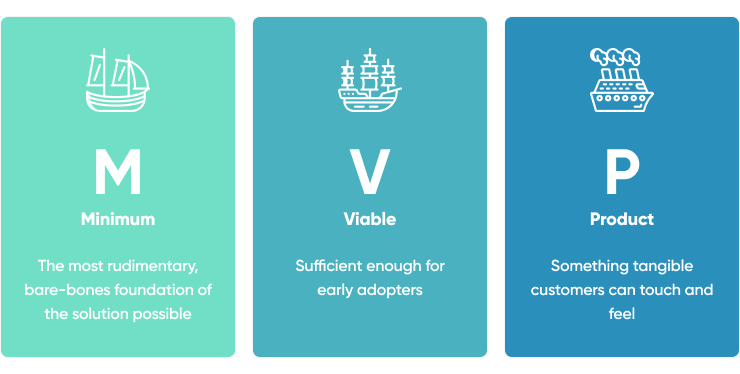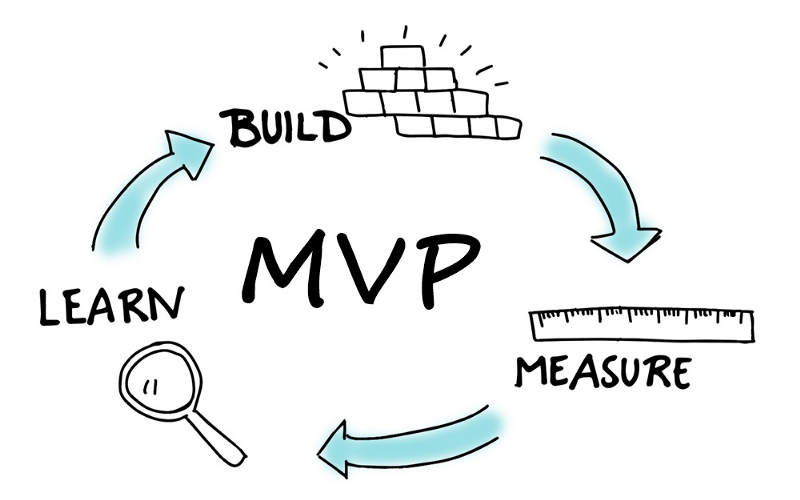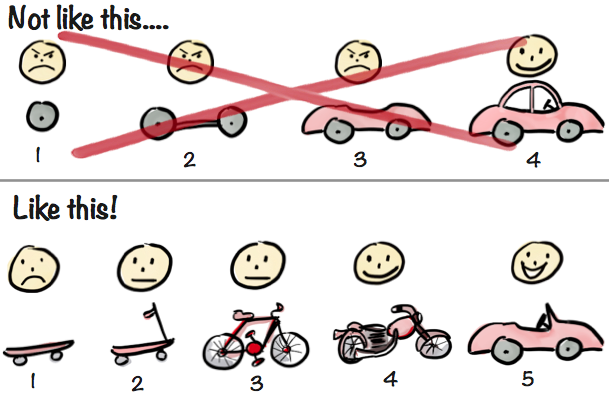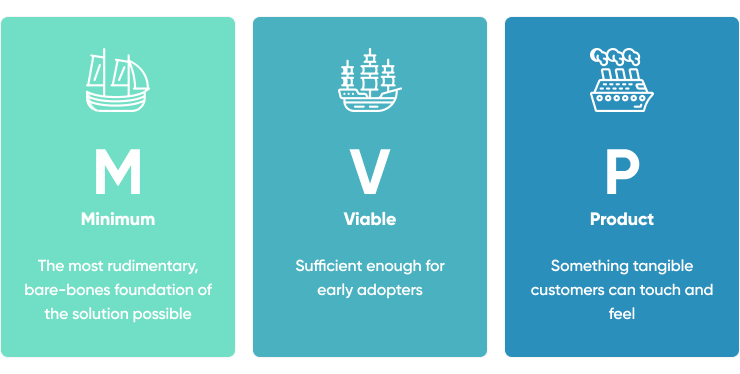Building an MVP (Minimum Viable Product): A Comprehensive Guide for Startups
In today’s fast-paced startup environment, building a Minimum Viable Product (MVP) has become an essential strategy for entrepreneurs aiming to validate their business ideas while minimizing risks. This article will delve into the concept of an MVP, its importance, key components, and steps to create a successful one, helping you understand how to effectively navigate the initial phases of product development.

What is a Minimum Viable Product (MVP)?
A Minimum Viable Product (MVP) is a simplified version of a product that includes only the core features necessary to satisfy early adopters. The goal of an MVP is to validate assumptions about your business idea and gather user feedback before investing in further development. The concept was popularized by Eric Ries in his book, The Lean Startup, which emphasizes the importance of iterative product testing and user involvement in the development process.
Importance of an MVP
The importance of building an MVP cannot be overstated. Here are a few key reasons why startups should prioritize this approach:
- Reduces Risk: An MVP allows you to test your concept in the market without spending excessive resources. By launching a simplified version of your product, you can gauge interest and identify potential flaws before committing to full-scale development.
-
Validates Ideas: By obtaining real-world feedback, you can determine whether your product meets user needs. This validation process is crucial for ensuring that you are building something that your target audience truly wants.
-
Saves Time and Money: Developing a full-featured product can be costly and time-consuming. An MVP helps streamline the process by focusing on essential features, enabling you to launch quicker and iterate based on user feedback.
Benefits of Building an MVP
Building an MVP offers numerous benefits, including:
- Faster Time-to-Market: An MVP can be developed more quickly than a complete product, allowing you to enter the market sooner and gain a competitive edge.
-
User-Centric Development: By engaging with users early in the process, you can adapt your product based on their feedback, ensuring that the final version aligns with their expectations.
-
Lower Development Costs: Focusing on core features reduces initial development costs, allowing you to allocate resources more effectively and invest in features that users actually value.
Key Components of an MVP
To successfully create an MVP, it’s essential to focus on its key components:
Identifying Core Features
The first step in building an MVP is to identify the core features that address your target audience’s most pressing needs. This involves distilling your product idea to its essence, ensuring that you only include functionalities that provide the highest value.
User Research Techniques
Understanding your users is paramount to defining these core features. Consider employing the following research techniques:
- Surveys: Gather quantitative data about user preferences and pain points.
- Interviews: Conduct qualitative interviews to gain deeper insights into user motivations.
- Focus Groups: Organize discussions with potential users to explore their thoughts on your product concept.
These methods can provide invaluable insights that guide your MVP development, ensuring it resonates with your audience.
Prototyping
Once you’ve defined your core features, the next step is prototyping. This involves creating a preliminary version of your product to test its functionality and design.
Low-Fidelity vs. High-Fidelity Prototypes
- Low-Fidelity Prototypes: These are basic representations of your product, such as sketches or wireframes. They are inexpensive and allow for quick iterations based on feedback.
-
High-Fidelity Prototypes: These prototypes are more polished and closer to the final product, providing a realistic user experience. They are useful for testing usability and design choices.
Tools for Prototyping
Several tools can assist in the prototyping process, such as:
- Sketch: A popular design tool for creating wireframes and user interfaces.
- Figma: A collaborative design tool that enables teams to work together in real-time.
- InVision: A prototyping platform that allows you to create interactive mockups of your product.
Selecting the right tools will help streamline the prototyping process and enhance collaboration among your team.
Steps to Build Your MVP
Creating a successful MVP involves several strategic steps:
Step 1: Define Your Target Audience
Before you can build your MVP, you must define your target audience. Understanding who your ideal users are will guide your decision-making throughout the development process. Consider creating user personas that encapsulate the demographics, needs, and behaviors of your potential customers.
Step 2: Outline Your MVP Features
Next, outline the features that will make up your MVP. Utilize frameworks like MoSCoW (Must have, Should have, Could have, Won’t have) to prioritize your features effectively. This structured approach ensures that you focus on delivering value while keeping development manageable.
Step 3: Develop a Prototype
With your core features defined, it’s time to develop a prototype. This will serve as the foundation for your MVP, allowing you to test your ideas before full-scale development begins.
Step 4: Test and Validate Your MVP
Finally, testing and validating your MVP with real users is critical. Collect feedback on usability and features, and use this data to make informed decisions about future iterations.

By following these steps, you’ll be well-equipped to build a Minimum Viable Product that resonates with your target audience and paves the way for successful product development. In the next section, we will explore common mistakes to avoid when building an MVP and examine real-world examples of successful MVPs that have thrived in their respective markets.
Stay tuned for more insights!
Common Mistakes to Avoid When Building an MVP
Building a Minimum Viable Product is not without its challenges. Many startups stumble along the way, leading to wasted resources and missed opportunities. Here are some common pitfalls to avoid:
1. Overcomplicating the MVP
One of the biggest mistakes entrepreneurs make is trying to add too many features to their MVP. Remember, the goal is to validate your core idea. Focus on delivering just enough functionality to test the market effectively.
Tip: Use the MoSCoW method to prioritize features, ensuring you only include the most essential ones.
2. Ignoring User Feedback
Failing to listen to user feedback can lead to disastrous results. After launching your MVP, gather as much feedback as possible and be ready to pivot based on what your users tell you. Ignoring this step can cause you to continue building a product that no one wants.
“Your most unhappy customers are your greatest source of learning.” — Bill Gates
3. Skipping Market Research
Launching an MVP without proper market research can set you up for failure. Understanding your target audience’s needs and preferences is critical. Conduct thorough research to ensure your MVP aligns with market demands.
External Resource: For in-depth strategies on market research, check out this comprehensive guide on conducting market research from Forbes.
4. Lack of Clear Goals
Before you embark on your MVP journey, establish clear objectives for what you want to achieve. Whether it’s user acquisition, feedback, or sales, having a clear focus will guide your development process.
5. Neglecting to Iterate
The MVP process is inherently iterative. After collecting user feedback, don’t be afraid to make changes and improvements. Continuous iteration based on user data is key to creating a successful final product.
Real-World Examples of Successful MVPs
To inspire you further, here are a few notable examples of companies that successfully built their businesses through MVPs:
1. Dropbox
Dropbox started as a simple MVP—an explainer video that demonstrated how the product would work. The video generated significant interest, allowing the company to validate its concept before developing the actual product. This approach helped Dropbox to attract over 70,000 sign-ups in a single day.

2. Airbnb
When Airbnb launched, its MVP consisted of a basic website that allowed users to book rooms in the founders’ apartment. This simple approach allowed them to test their hypothesis about the demand for short-term rentals before expanding their platform.
3. Zappos
Zappos started with a simple MVP: a website that sold shoes. The founder took pictures of shoes from local stores, posted them online, and fulfilled orders by purchasing the shoes from retail locations. This method helped Zappos gauge interest in online shoe sales before fully committing to inventory.
Frequently Asked Questions (FAQs)
What is the main purpose of an MVP?
The primary purpose of an MVP is to validate a business idea with minimal resources. By launching a simplified version of your product, you can gather user feedback and determine if there is demand before investing in full-scale development.
How long should it take to build an MVP?
The timeline for building an MVP can vary depending on the complexity of the product. However, the goal is to launch quickly, often within a few weeks to a couple of months.
Can an MVP evolve into a full product?
Yes! An MVP is meant to be a starting point. As you gather feedback and iterate on your product, your MVP can evolve into a more robust offering that incorporates additional features and improvements based on user insights.
Conclusion
Building a Minimum Viable Product (MVP) is a crucial step for startups looking to validate their ideas and enter the market with confidence. By focusing on core features, actively engaging with user feedback, and avoiding common pitfalls, you can significantly increase your chances of success.
As you embark on your MVP journey, remember that the ultimate goal is to learn and adapt. By embracing an iterative approach and being responsive to user needs, you’ll be well on your way to creating a product that resonates with your target audience.
For more insights on startup strategies and MVP development, explore resources like The Lean Startup and stay tuned for further articles on entrepreneurship and product development.

By following these guidelines and learning from successful examples, you can effectively navigate the complexities of building an MVP and set the stage for a thriving business.

